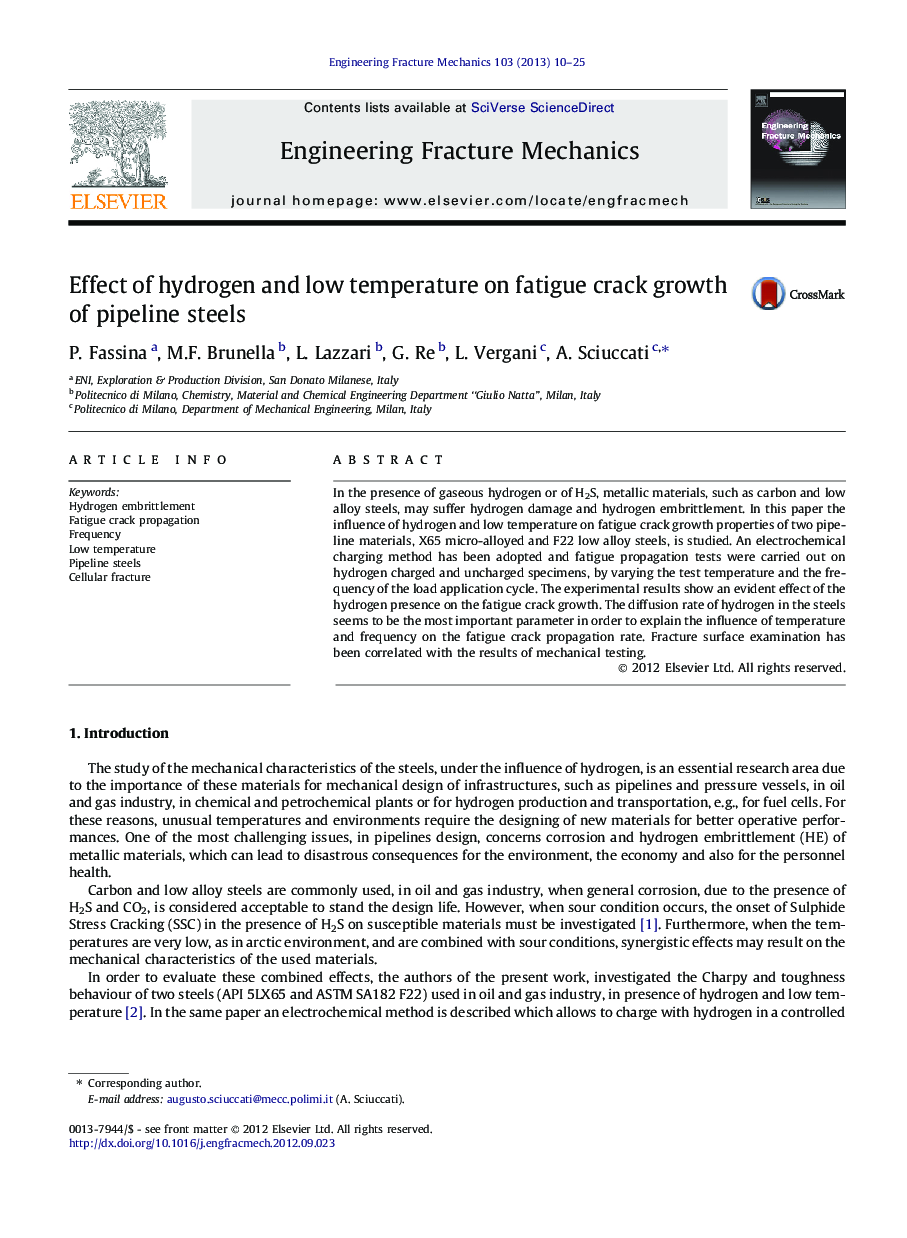| Article ID | Journal | Published Year | Pages | File Type |
|---|---|---|---|---|
| 770457 | Engineering Fracture Mechanics | 2013 | 16 Pages |
In the presence of gaseous hydrogen or of H2S, metallic materials, such as carbon and low alloy steels, may suffer hydrogen damage and hydrogen embrittlement. In this paper the influence of hydrogen and low temperature on fatigue crack growth properties of two pipeline materials, X65 micro-alloyed and F22 low alloy steels, is studied. An electrochemical charging method has been adopted and fatigue propagation tests were carried out on hydrogen charged and uncharged specimens, by varying the test temperature and the frequency of the load application cycle. The experimental results show an evident effect of the hydrogen presence on the fatigue crack growth. The diffusion rate of hydrogen in the steels seems to be the most important parameter in order to explain the influence of temperature and frequency on the fatigue crack propagation rate. Fracture surface examination has been correlated with the results of mechanical testing.
► Influence of hydrogen and low temperature on fatigue crack growth of steel. ► Temperature and frequency influence is related to the hydrogen diffusion rate. ► da/dN increases when the temperature increases or the frequency decreases. ► Charged specimens show different kinds of brittle fracture propagation modes. ► Brittle fracture may appear as brittle facets, “cells” or intergranular fracture.
